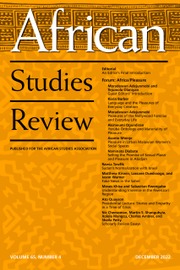Sharad Chari’s Apartheid Remains is prefaced by a short photographic essay titled “Prelude: What Remains?” Only one of the photographs is an individual portrait—of an elderly woman named Hafiza Reebee, clutching an inhaler she uses to deal with the chronic asthma she endured as a result of pollution from the nearby oil refinery. The only photograph that includes anyone known to history beyond the immediate community shows a young Robert McBride gazing off into space as one of six “Young people in conversation, Wentworth, 1983.” This focus on the quotidian, what Chari calls the daily “texture of life,” typifies Chari’s approach in his brilliant historical excavation of the human geography of the South Durban communities of Merebank and Wentworth over more than a century.
The ultimate purpose of the book hinges on the pun of the title. On the one hand, Chari is like an archaeologist working through the remains of apartheid and earlier segregation at the particular site of Merebank and Wentworth. On the other hand, he is making a more polemical point about the way apartheid currently persists in the form of environmental racism and social marginalization.
While the photographic essay stresses the human involvement in the communities’ geography, the nine detailed maps that follow provide a cartographic summary of how municipal authorities—whether colonial, apartheid, or postapartheid planners—produced not only racial space but also new possibilities for resistance. Through his palimpsestic examination of these few square miles of marginalized space, Chari presents a narrative, almost novelistic in its attention to subjectivity, that encapsulates an improbably comprehensive account of the last 150-plus years of South African history and how the biopolitical forces of successive governments have shaped that history.
The scope of the book is even broader, as the story of Merebank begins with the establishment of Indian communities from the 1860s on. This allows Chari to bring Indian Ocean historiography into conversation with the kind of Black Atlantic theorizing that has tended to dominate thinking about South African race relations.
Within the parameters of apartheid’s social engineering, Merebank and Wentworth were, respectively, Indian and Coloured communities. Chari’s first chapter, however, explains that in the first decade of the twentieth century, the space was also the site of British concentration camps where Afrikaner women and children were interned—and where hundreds died. Although the memorials for those particular spaces are now not easy to find, they are also a part of the apartheid remains of the site, shaped by “late-Victorian biopolitical fantasies of gendered whiteness and racial government” (26).
Subsequent chapters deal with the forging (Chari deliberately plays on the dual meaning of this phrase, too) of an Indian identity related to the complicated history of the Indian diaspora in South Africa. Whether descended from indentured laborers or so-called “passenger Indians,” early twentieth-century Indians in Merebank could evoke certain preexisting traditions on which to base what Chari calls an “Indian commons.” The imagined Coloured community of Wentworth was, by contrast, “vagabond, unruly, and ceaselessly imaginative” (96).
Chapters Three, Four, and Five take us through the formalization of segregation in Durban under supposedly “progressive,” “development”-minded city-planning from the 1920s on, leading up to the “science fiction” of “apartheid’s spatial fix” from 1948 to 1970. Throughout, Chari insists on how lived experience always evaded being fixed within cultural or physical boundaries. On the contrary, especially in sites like Wentworth and Merebank, “waves of dispossession produced new spaces of perversion and conviviality” (27).
Those new spaces were explicitly spaces of resistance, and in Part Two, “Remains of Revolution,” Chari brilliantly weaves the stories of these two small communities into the general history of South Africa and the anti-apartheid struggle in particular. It helps that Durban in the early 1970s had already been recognized as a center of Black Consciousness-inspired grassroots workerism. But Chari does an excellent job untangling the different strands of labor, student, Black Consciousness and Natal Indian Congress organizing that variously inspired Merebank and Wentworth at the time.
When those inspirational visions of a life in common were brutally suppressed, the lives of people in Merebank and Wentworth necessarily began to entwine even more with the political opposition being led by the ANC. Two scrupulously researched chapters on the armed struggle and urban revolution and the divisions between grassroots activism and the top-down, masculinist militarism of the ANC and Umkhonto we Sizwe lead into a challenging final chapter on how grassroots activists like Robert McBride were “disqualified” from participating in supposedly legitimate revolutionary acts.
In this chapter, Chari contrasts McBride’s notorious 1986 bombing of the beachfront Magoo’s Bar with the very different model of resistance offered by Merebank and Wentworth photographers Omar Badsha and Peter McKenzie, who used their cameras to shoot back at apartheid. Chari reads these photographers’ works as objective documents of their present moments, but more importantly as major imaginative interventions—as efforts to resist the deliberate claustrophobia of apartheid space and the closing down of opportunity. Out of the “carceral landscape of Wentworth in the 1980s, these images are a poetic call for a spacious world to come and a determination to wait for it” (329).
A beautifully eloquent Coda to the book extrapolates that future-oriented commitment to new possibilities of planetary community. “If and when a hypothetical humanity faces its planetary kin with compassion, it will have to do so in relation to Africa’s diasporas, including its internal ones … Afrofuture is the common” (346).
All told, Apartheid Remains is a masterwork of interdisciplinary research—solidly based on years of archival and field research, theoretically sophisticated, and driven by an inspiring political faith that a better world is possible.


